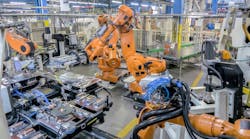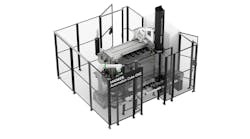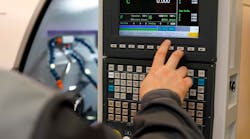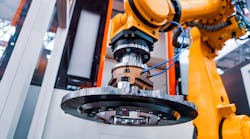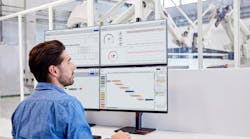Konecranes calls its new SMARTON® an “industry-shaping” design — an overhead crane that will lift loads ranging from 30 tons to more than 500 tons, and rugged and flexible enough to promise lower total lifecycle costs and high productivity for a broad range of operations. The supplier names steel handling and warehousing, automotive, general manufacturing, power, workshops, automatic storage systems, and mining among the industries it targeted with the new design.
SMARTON resulted from 3.5 years of development work, and it is named for the benefits it provides to customers: Spacemaking, Maintenance-friendly, Adjustable and applicable, Reliable, and able to move TONs.
"We wanted to introduce a crane that satisfies customer needs and is implemented using the best available technology. The development of SMARTON incorporates the experience we have accumulated from the maintenance of hundreds of thousands of cranes and from our extensive product range, which is the most comprehensive in the field of industrial lifting applications," according to chief technology officer Ari Kiviniitty.
SMARTON is compact, so work areas have more available space, and new industrial spaces can be smaller (thus reducing construction and heating costs.) Compactness means that the crane can achieve tight hook approaches, allowing the user to place the load much closer to the wall. A space-saving service platform folds over the trolley to protect the trolley components.
All of the crane's service points are located on one side and are easy to access.
In operation, the crane’s braking energy is fed back into the power grid, reducing energy consumption and energy costs by up to one third.
One design objective was “adaptability,” so crane operators might be able maximize the equipment while business and process needs change. Once the basic design is installed, customers may purchase additional and optional functions as needed. SMARTON can be updated with additional features, such as automated positioning, extended speed range, defined working areas, maintenance monitoring, or remote diagnostics.
"The SMARTON offers a selection of standardized modules that are intelligently designed and coordinated. This innovative crane can be quickly configured to suit many customers' unique needs," states Jaakko Koppinen, Director, Heavy Duty Cranes.
Another design goal was to minimize the frequency and duration of maintenance shutdowns. SMARTON is built with proven components and the latest technology to maximize productivity and minimize total lifecycle costs.
"In today's industrial environment, shutdowns are very expensive. The better we can predict when equipment needs to be serviced and the faster we can perform maintenance, the longer a crane can operate and benefit the process," explains Koppinen.
The crane monitors its own condition and recommends when and what kinds of inspections or preventive maintenance should be performed. SMARTON keeps track of work cycles and predicts the remaining safe operating lifetime of the various components.
"The service life of hoisting wire ropes is a key element in maintenance expenses. Wire ropes are costly, and changing them is a time-consuming task. We have clearly extended the life of the wire ropes by optimizing the pulley rope angles in the hook housing, making them as small as possible to reduce the wear and tear on the wire ropes. Additionally, another innovation in SMARTON is its ability to predict the replacement interval of the wire ropes based on actual operating condition," explains Kiviniitty.
"We opted for tried-and-tested components instead of unique parts in SMARTON. Should spare parts be needed, their availability is guaranteed. We always have a given number of components in stock," says Koppinen.
SMARTON features an easy-to-use “human interface to machine” (HIM) system that keeps the user continuously up-to-date on load weight and its position relative to the available workspace. The HIM implementation tool makes it easy to understand the features of the device and speeds up user training. Error-detection diagnostics instruct the user on how to deal with any problems. Additionally, the crane operator can program working cycles to boost productivity.
"The service panel enables faults to be solved quickly. Since the fault and its frequency are displayed on the panel, SMARTON is designed to speed up the inspection time, particular of the frequency inverter panels," explains Timo Ruokonen, a maintenance fitter at Konecranes.
Other productivity-enhancing features of SMARTON include its precise, stepless-speed control ensures that loads can be lifted, moved, and lowered faster, thereby reducing the overall load-handling times.
Remote monitoring is an available feature. Three support centers in different time zones around the world ensure that Konecranes offers 24/7 support for equipment, regardless of the location.



